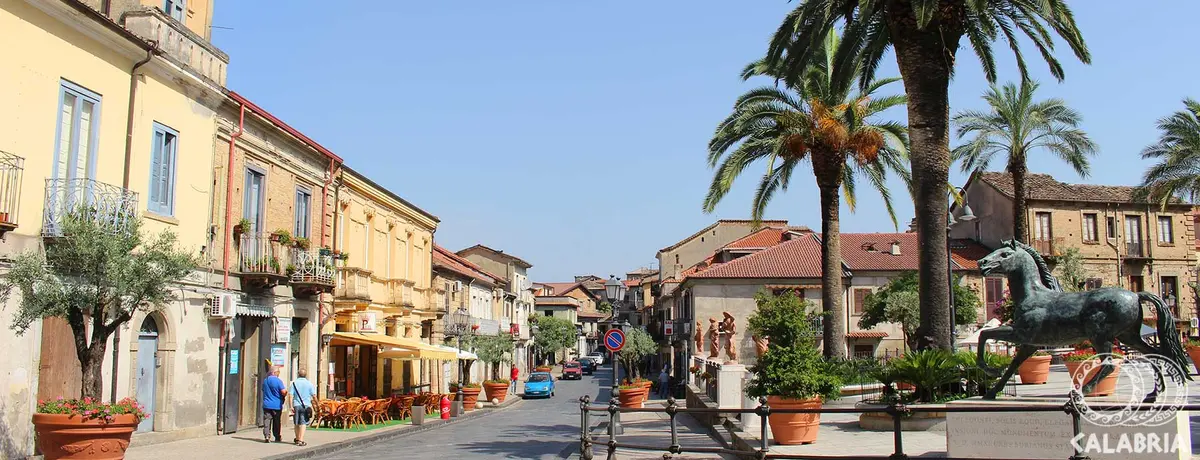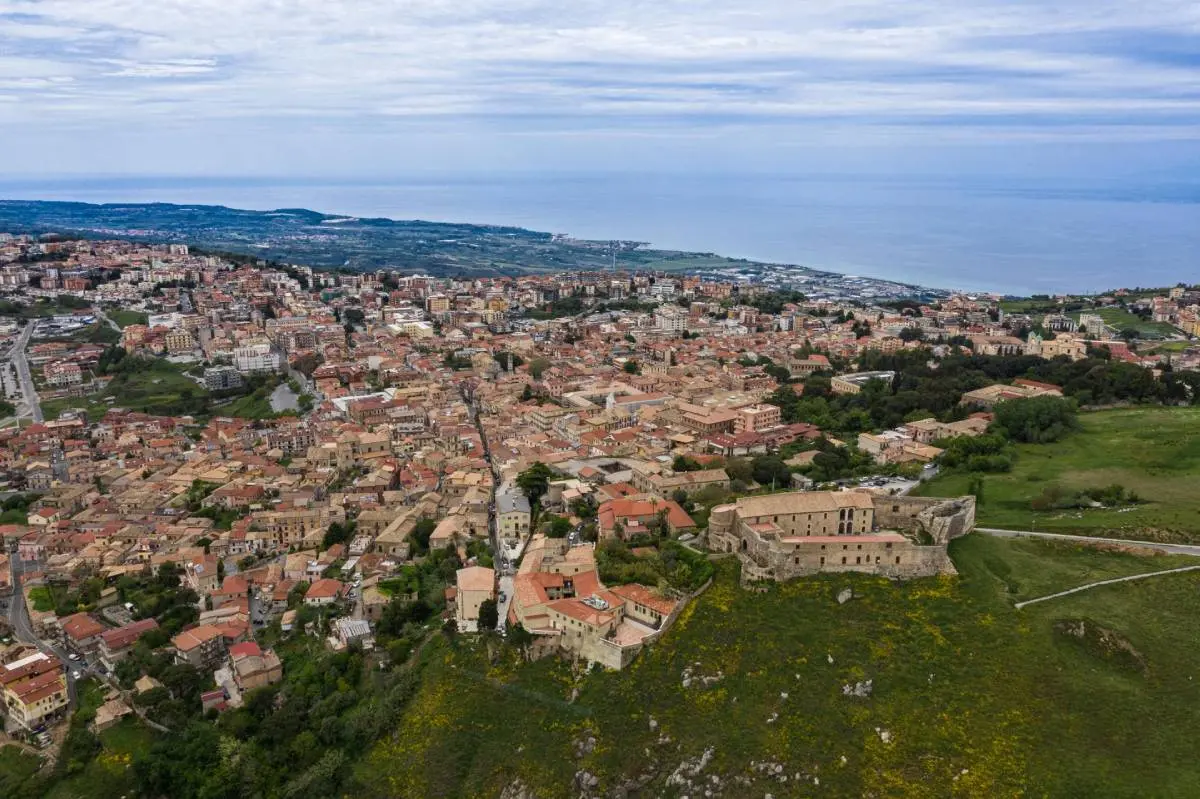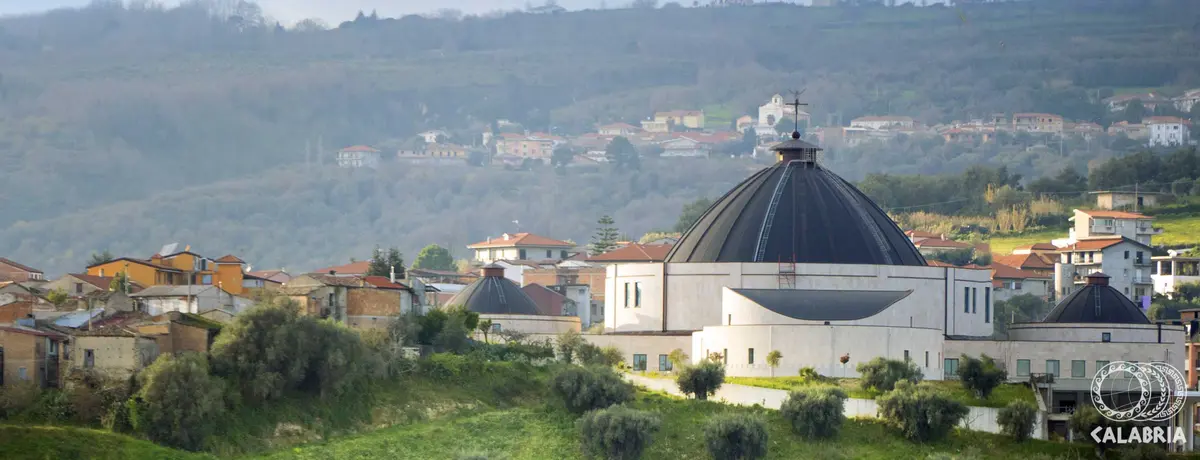Soriano Calabro
Soriano Calabro,the legend of the Painting of San Domenico

Historical centres
Soriano Calabro is a quiet little town in the Serre Vibonesi surrounded by groves full of splendid olive trees.
It seems that its origins are linked to the foundation of the Dominican monastery very early in the 16th century which became one of the wealthiest and most famous in Europe.
Within a few years the cult of the image of San Domenico gave great fame to the Dominican Convent.
The residential area, on a slight slope and with a particular structure, can be divided into two parts - the old urban centre with the ruins of the old Monastery of San Domenico, and the newer urban centre to the south of the old centre which developed after 1960.
There are many culturally important buildings of great historic-artistic and anthropological value, such as the Basilica di Santa Maria Maggiore, with the ruins of the old monastery, the churches of San Martino Vescovo, the Madonna del Carmine, San Filippo Centro Storico, San Francesco Da Paola and the evangelical church in Soriano Calabro. The Museum of the Marbles of the old monastery of San Domenico, the Earthquake Museum and the Art Gallery (MUANT) are all worth visiting. Craftsmanship is an essential sector of the Soriano economy and there are workshops of rustic and artistic terracotta, for the production of wicker, reed and wooden articles (the wood comes from the forests of the Serre Vibonesi). Soriano Calabro is known for the production of Mustaccioli, a traditional Calabrian pastry, a favourite both in Italy and abroad. These hard biscuits are made with flour and honey (and, in some versions, warm wine must) and have various shapes decorated with brightly coloured aluminium foil. The shapes most frequently produced are the fish, basket, horse, woman, heart and baroque ‘S’; they are decorated with strips of red, green and silver aluminium. The black shapes (such as the ‘horse of San Francesco’) are obtained by burning the sugar with very little water. The main traditions and festivals include the custom of the affruntata (comprunta in Soriano dialect) during Easter, and the Calata del Quadro, the miraculous and venerated painting of San Domenico kept on the main altar of the Basilica of Soriano Calabro.
The Dominican Monastery
The Basilica Sanctuary of San Domenico of Soriano Calabro is a splendid example of late Baroque architecture, built in 1838 on the ruins of the old monastery destroyed in the earthquake. The old monastery was a majestic building with elegant, sophisticated areas including 5 cloisters. The church had a Latin cross layout four bays long with six side chapels. In its time, the old Dominican monastery at Soriano Calabro wasn’t just a centre of intense religious life but also an exclusive cultural and intellectual circle where the great Calabrian philosopher Tommaso Campanella also lived. The Dominican friars created a vast library with a printing works which issued major works including texts of the Holy Scriptures, theological and philosophical studies, local news and much more.
The Legend of the Painting of San Domenico
As often happens, there’s a legend behind the popularity of the monastery, which soon became an exclusive destination for devotees, pilgrims and artists from all over Italy and Europe. According to this legend, San Domenico appeared to Father Vincenzo da Catanzaro (the person who promised to build the monastery) several times in 1510, ordering the construction of a church in Soriano Calabro to be dedicated to him. On the night between 14 and 15 September 1530, Mary Magdalene and St Catherine of Alexandria appeared to Brother Lorenzo da Grotteria in this church to give him a painting portraying San Domenico with a book in his right hand and a lily in his left. They asked him to give the painting to the Abbot of the Dominican monastery at Soriano Calabro to display it for the veneration of the faithful. In just a few years, the cult of the image of San Domenico brought great fame to the Dominican monastery which became one of the best known, and the destination of devotees and pilgrims from all over Italy and Europe.
Religious festivals
The festival of the patron saint San Martino is 11 November and the festival of San Domenico is celebrated on 14-15 September. The ‘Affruntata’, the evocation of the meeting between the resurrected Christ and His mother, is also held in Soriano, as in many other centres near Vibo Valentia, during Easter. In April, shopkeepers organise the festival in honour of San Francesco di Paola, to whom they are very devoted. On 16 July, there is the festival of the Madonna del Carmine. The so-called ‘Festa del flagello’ (Whipping Festival), an event that recalls the terrible earthquake of 1783, is celebrated at the beginning of February. On this occasion, the statue of the Madonna del Rosario is carried in procession to the monument at the entrance to the town.
Soriano Calabro Mostaccioli
Mostaccioli, from the dialect term ‘mustazzoli’, are hard biscuits prepared with flour and honey (and, in some versions, warm wine must as well), of various shapes, decorated with brightly coloured aluminium foil. The shapes most frequently produced are the fish, basket, horse, woman, heart and baroque ‘S’. Mostaccioli can be seen at patron saint festivals and fairs, in typical wooden boxes, and recall rural peasant life, they symbolised respect for the family and countryside, and the real, simple feelings of the Calabrian peasant population. Although it’s thought that this pastry has very old origins, it seems that the Dominican monks passed on the pastry-making art to local people, and so also the recipe for Mostaccioli. Over time, they acquired magic-religious, ritual, propitiatory and also aesthetic aspects which are certainly exclusive and fascinating.
Useful information
What to know about Soriano Calabro
Where to Sleep
There are 1 available accommodations.
Places
There are 1 places to visit.
Travel Ideas
There are 3 travel ideas.
Infopoint Soriano Calabro
Piazza Municipio, Soriano Calabro
No result









